Southport Demand Monitoring Zone Strategy (2016)
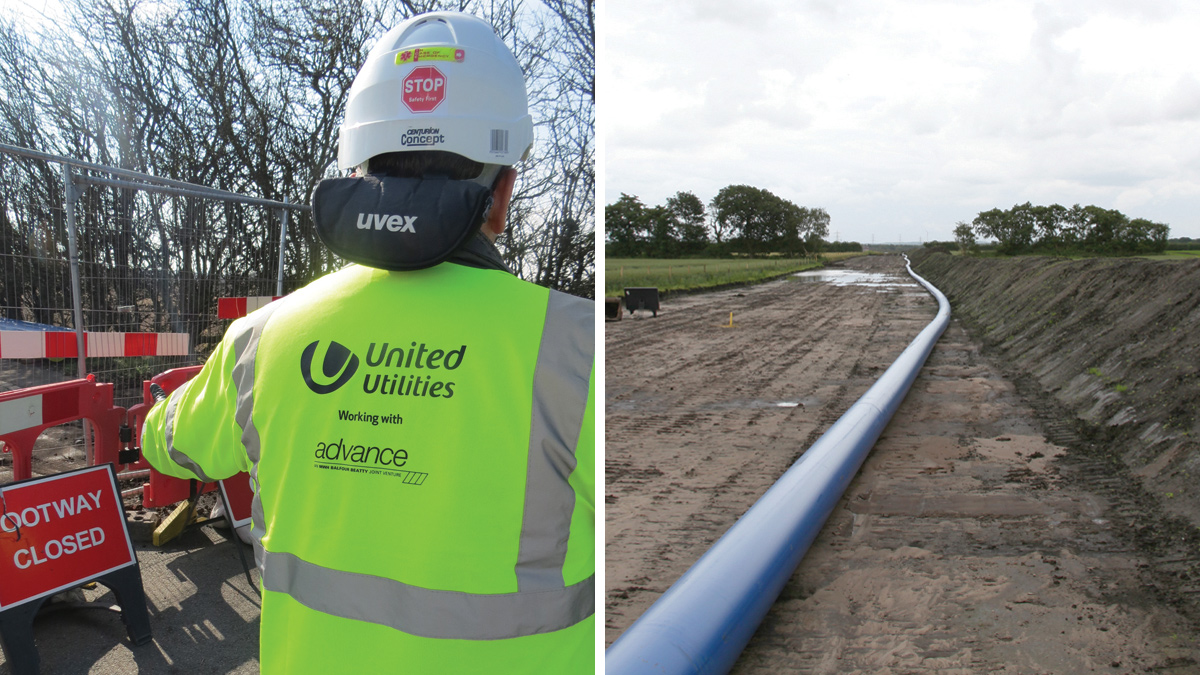
(left) Advance is a joint venture set up to deliver United Utilities’ AMP6 promises and (right) Pipelines - Part of the 32km route over farmland - Courtesy of advance JV
Southport is a large seaside town that lies on the Irish Sea coast approximately 20 miles north of Liverpool. With a population over 100,000 Southport is the eleventh most populated settlement in the north-west of England. At the turn of the 19th century the area became popular with tourists due to the easy access from the nearby Leeds and Liverpool Canal and the town quickly grew. The rapid growth of Southport largely coincided with the industrial revolution and the Victorian era. In the summer months the town sees an influx of visitors coming to enjoy the attractions the town has to offer including Southport Pier with its Pier Tramway. Southport is also home to the second longest seaside pleasure pier in the British Isles and Lord Street, an elegant tree-lined shopping street, once home of Napoleon III of France.
Project overview
advance is a joint venture between MWH Treatment and Balfour Beatty which was strategically formed as a contract delivery partner to help United Utilities deliver their AMP6 capital works investment programme.
Under the capital works programme United Utilities identified a number of schemes to be undertaken in order to address deficiencies within the network and increase the available supply of quality drinking water within the Southport Demand Monitoring Zone (DMZ).
Within the DMZ,there are ten clean water supply zones providing clean drinking water to a total population around 245,000 people/properties most of which are located within the coastal towns of Southport, Formby and Ainsdale together with the inland towns of Maghull, Ormskirk and Skelmersdale. The remainder of the area contains the rural communities of West Lancashire.
The £21m Southport Demand Monitoring Zone (DMZ) Strategy Phase 2 Cluster was awarded to advance JV in August 2015. The project consists of a number of individual projects in and around the Southport area to be undertaken over a two year period. Projects include WTWs, boreholes and over 32km of pipelines.
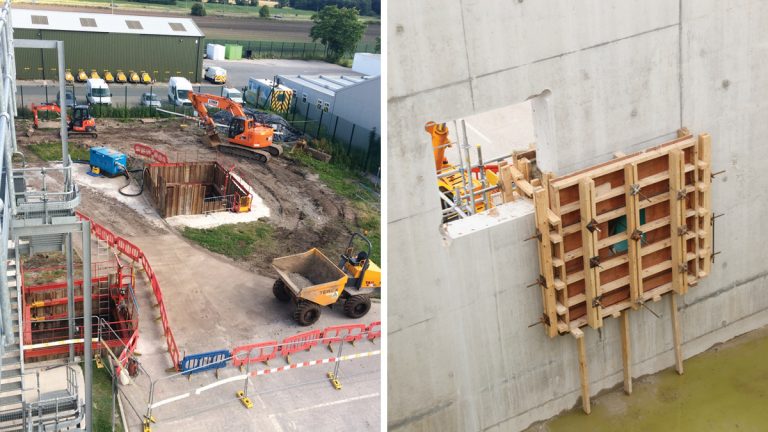
(left) Royal Oak WTW and (right) the new RFG cells at Royal Oak – Courtesy of advance JV
Drivers for the project
The 3 key drivers for the Southport Demand Monitoring Zone strategy are:
- Increased demand on the water supply during peak times: In the summer months United Utilities see a dramatic increase demand on the water supply. This is largely due to the increase of visitors in the area as well as horticulture and framing industries which are predominant in the area. The demand almost doubles during the summer months from 60Ml/d to 100Ml/d placing stress on the current infrastructure and storage. By identifying pressure and supply problems and the need for leakage control, these works now will result in meeting the DG2 standard. This standard measures the number of properties at risk of experiencing low water pressure for potentially 255,000 properties In the future.
- Growth: The Liverpool North Trunk Mains carry water to both north Liverpool as well as 65% of Southport’s needs. The last ten years have seen much expansion in both of these areas that has resulted in an extra demand on the water supply of 9Ml/d since 2000. This is now presenting itself as some residents in the north Liverpool area see a reduction in water pressure at peak times.
- Quality: The 5 (No.) water treatment sites within the DMZ have a range of operational health and resilience issues; these typically include water quality issues due to the age of the assets and increased solvents in the raw water.
Scope of works
The 5 (No.) direct filtration water treatment works within the DMZ are at Bickerstaffe, Blundell House, Mill Brow, Springfield, and Dark Lane and they have typical outputs of 5Ml/d. The works involve a mixture of both infrastructure and non-infrastructure works and are necessary to deliver a quality drinking water supply that meets consumer demand. Works associated with the project are briefly described as follows:
- Commissioning new borehole sites and upsizing capacity at existing water treatment plants.
- Laying 24km of new pipelines to bring Raw Water to Royal Oak/Bickerstaffe WTWs.
- Slip lining of existing 6km of water mains.
- Upgrade, refurbishment, decommissioning and demolition works at Royal Oak/Bickerstaffe WTWs, pump station and borehole sites.
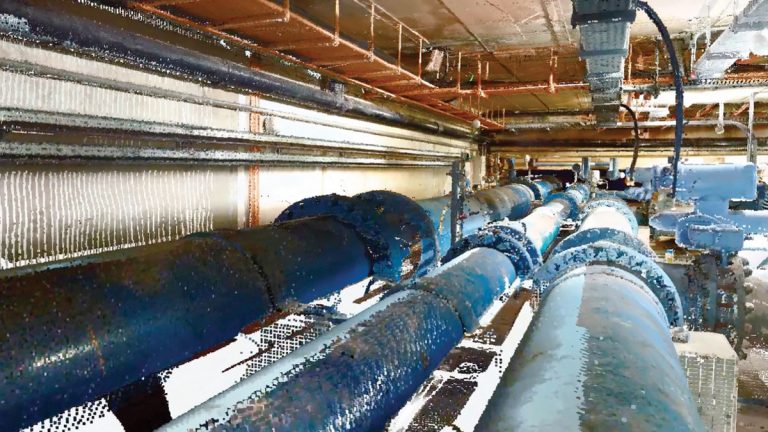
3D laser scan taken in Bickerstaffe PS – Courtesy of advance JV
Engineering a solution
Phase 1 was delivered by KMI during AMP5 and included the construction of a new 13Ml/d water treatment works at Royal Oak, creating new boreholes and recommissioning existing boreholes to provide raw water for the new water treatment works. This first phase of the Southport DMZ strategy was featured in UK Water Projects 2014. Also during 2014, an initial Extended Phase I Habitat survey was undertaken, which identified the potential for protected water voles at a number of the watercourse crossings.
Phase 2 is being delivered by advance JV is now underway. With a completion date of November 2017 the second phase of the project can be summarised as follows:
Royal Oak WTW
- Increase the capacity of the existing WTW from 13ML/d to 44Ml/d capacity plant, with 6 (No.) filters.
- Blending of differing raw water sources.
- Provide high speed communications with all remote sites within the DMZ by enhancing the SCADA system.
Royal Oak West Boreholes
- Abandon treatment facilities at Millbrow, Springfield and Blundell House.
- Refurbish and convert, Springfield and Blundell House WTW/Borehole to resource pumping stations to supply raw water to Royal Oak.
- Refurbish the Springfield Adits to increase and restore their reliable yield.
- Install 3.5km (400mm PE pipe) of new raw water mains and infrastructure from Blundell House Pumping station to Springfield Pumping station.
- Install 3.5km (400mm PE pipe) of new raw water mains and infrastructure from Springfield Pumping Station to Royal Oak WTW.
Royal Oak South Boreholes
- Extend the borehole linings to increase yields.
- Make permanent the new boreholes with instrumentation, pumps within permanent purpose built kiosks.
- Install 6km (400mm PE pipe) of new raw water mains and infrastructure from Whitegates Farm to Voces Lane.
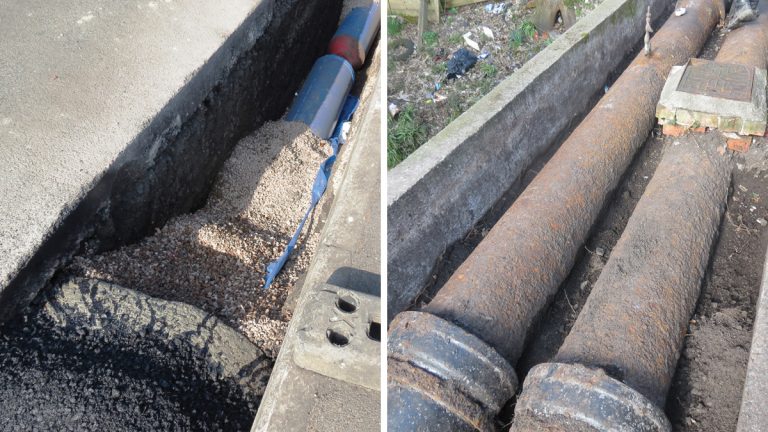
(left) New pipeline being installed on the A38 and (right) the existing water pipes are being replaced with new larger pipes under the project scope – Courtesy of advance JV
Royal Oak East Boreholes
- Make permanent, kiosk and access arrangements at Aughton Park and Moss End Boreholes. These are not currently required for demand but undertaking the works provides the option to utilise the boreholes in the future.
Bickerstaffe WTW and Boreholes
- Abandon treatment facilities Bickerstaffe WTW.
- Refurbish building and convert Bickerstaffe Boreholes to resource pumping station.
- Install a new raw water main from Bickerstaffe Boreholes to Royal Oak WTW (approximately 100m).
- Refurbish electrical panels and pumps.
Bickerstaffe Pumping Station
- New Bickerstaffe Pumping Station designed to maximise the available head on the Liverpool Trunk Mains to minimise operational costs.
- Install backup power supply for the new pumping station.
- Install new pipeline and connections into existing infrastructure for the new pumping station configuration.
- Complete building refurbishment.
- Refurbish/replace all electrical network, transformers, panels and pumps.
- Refurbish/replace Gorse Hill and Elmers Green surge vessels.
Dark Lane WTW
- Abandon and make safe Dark Lane WTW and boreholes.
- Abandon and make safe Greetby Hill Boreholes site.
- Increase the size of Scarth Hill pumps at Bickerstaffe Pumping station in order to meet increase capacity in event of Scarth Hill Service Reservoir being out of service.
- Install 3.7km (400mm PE pipe) of new raw water mains and infrastructure from Bickerstaffe Pumping Station to Scarth Hill Service Reservoir.
- Network reinforcement to Scarth Hill demand tile.
- Install 2.5km (400mm PE pipe) of new raw water mains and infrastructure from Scarth Hill to Dark Lane borehole.
Gorse Hill Service Reservoir (SR)
- Associated temporary pipework for flushing works.
- The existing three sections of mains totalling 17km between Gorse Hill and Bickerstaffe Pumping Station are to be cleaned by means of flushing.
DMZ Network reinforcement/resilience
- The 3.3km Mill Brow to Gorse Hill 18” main to be sliplined with 400mm PE pipe and reverse the flow from the historic arrangement.
- Network reinforcement between Gorse Hill Service Reservoir and Kew Island by constructing a new 5.8km, 400mm PE main.
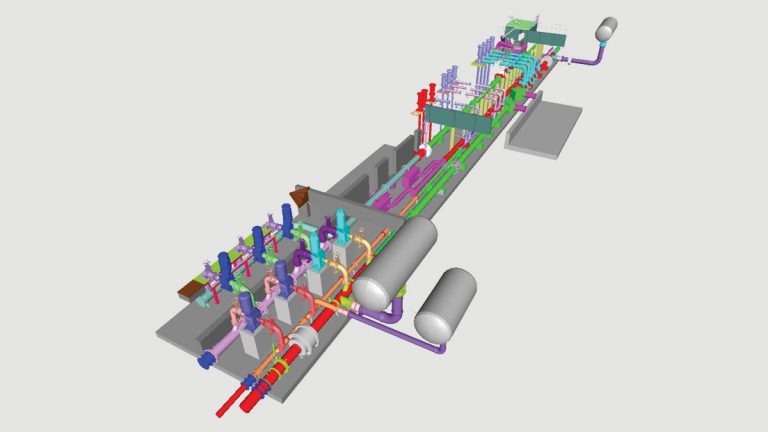
3D images of the pipeline – Courtesy of advance JV
Challenges
Bickerstaffe Pumping Station: The refurbishment of the Bickerstaffe Pumping Station is an extremely complicated section of the works. advance JV have engaged the MWH BIM integration team who have produced a 4D model of the pumping station.
This will aid design of the new equipment and the removal of existing equipment and has allowed the advance JV and UU operations team to sequence the construction activities with minimal disruption to the works.
The road network: In order to carry out the essential infrastructure works, advance JV will be working a 2km section of the public highway. The section of the A570 is an important part of the road network, based just a few miles from the town centre of Southport; the road is one of the main access routes that visitors traveling from the M6, Liverpool, Preston and Ormskirk would use in order to access the seaside town.
Recognised as an important part of the project advance JV liaised closely with the public, Lancashire Council and the Highways Agency to coordinate a traffic management plan that would avoid carrying out the major works during peak tourist season in order to minimise disruption to the public.
Part of the proposal was to start work earlier than planned on this stretch of road in order to avoid the summer rush. By carrying out the works earlier in the year advance JV would eliminate the need for having temporary road restrictions in the area during peak times.
Stakeholder engagement: Another high priority for advance JV was stakeholder engagement; approximately 30km of the 32km stretch of new pipeline would have to be laid on private farm land.
Recognised as Grade 1, the farmland surrounding the DMZ offers some of the most fertile soil in the UK and is populated with 160 individual landowners. Each landowner was consulted by a dedicated member of the customer coordination team on an individual basis to ensure they were aware of the full nature of works and what the impacts of those works would be.
Located on the farmland is the crossing of the Ormskirk to Liverpool railway line. The original route of the pipeline would have been laid under the railway track; this would have resulted in working on overhead lines and potentially cause disruption to the rail service.
The design teams identified an underpass used by the farmers for access. By diverting the pipeline slightly to utilise the underpass the need for and the risks associated with works on the railway was completely eliminated.
Maintaining the supply: During the works it was necessary to maintain the water supply from Royal Oak. This meant that the any necessary water supply shutdowns were carried out at night to ensure a continuous supply to 245,000 people during peak times.
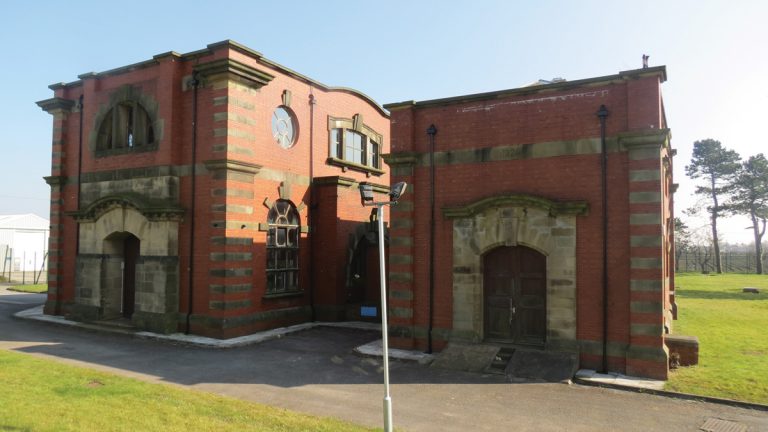
The original borehole pumping station at Bickerstaffe built in 1939 – Courtesy of advance JV
Leaving a lasting legacy for the community
The works will meet DG2 performance commitments, ensure quality standards whilst meeting the increased demand and provide a safe clean water supply to the people of Southport, its visitors and the horticulture and farming industries which relay on this resource to survive.
The improved network will have an estimated life expectancy of over 50 years. The construction teams have carried out land and drainage surveys to ensure that disruption to the land will be kept to a minimum and the soil and drainage will be returned to the farmer in perfect condition.
Some of the works carried out were done so in order to future proof the site. The boleholes at Aughton Park and Moss End are functional boreholes not currently required to maintain the existing supply. However should demand increase in the future, these boreholes are easily accessible.
Local community members have nominated the site for a WOW! award in recognition of the teams exceptional customer service. The WOW! Award Scheme is an opportunity for members of the public to provide feedback on individuals who have delivered great service.

(left) The pumping station still houses tools used to lay the original pipes and (right) the original pipes were laid in 1939 – Courtesy of advance JV
To date the Southport Demand Monitoring Zone project has received 9 WOW! award nominations from satisfied members of the public who have written in to thank the teams for hard work.
United Utilities is passionate about delivering the best customer service. Their strapline is ‘Helping Life Flow Smoothly’. Providing clean water and safely removing wastewater every day for 3 million homes and 200,000 businesses in the northwest is not an easy challenge. When it comes to listening to customers and demonstrating determination to ensure on-time delivery with minimal disruption to the public this site is proof that by improving the way employees engage with customers the value of praise is priceless.
The site is home to a number of national interest building which includes the original ‘borehole site’. The building still houses the tools used in the 1930s to the lay the original pipes.







